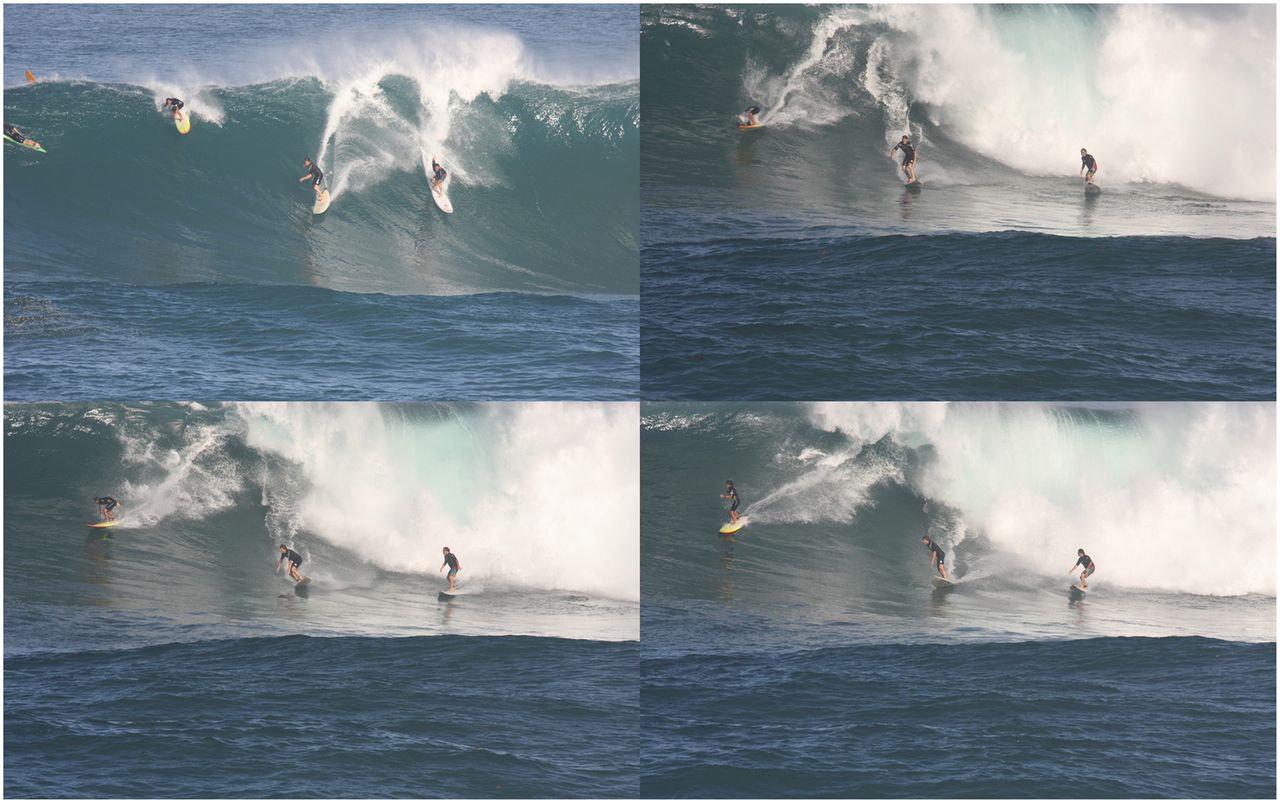Surfer Treats His Own Eye Problem with Giant Wave

Instead of getting surgery, an adventurous surfer in Hawaii sought a different approach to treat his eye condition — he dipped his head into the rushing water while surfing a gigantic, 30-foot (10 meters) wave, according to a new report of his case.
A band of fibrous tissue growing over the outer layers of the surfer's eye caused his eye problem, a condition called pterygium. This irritating and sometimes dangerous growth often forms in people who spend a lot of time outdoors in sunny climates, and occurs so commonly among surfers that it is dubbed "surfer's eye."
When a pterygium becomes irritating, or is likely to harm vision, doctors remove it with surgery.
But this 61-year-old surfer chose to let the force of water take care of his pterygium, by "overbalancing" while surfing in Waimea Bay, off the North Shore of the island of Oahu in Hawaii, a place known for big wave surfing.
"He momentarily dipped his face into the water while travelling at top speed, but was able to recover his balance and continue surfing the wave," Dr. Thomas Campbell, a medical officer at Princess Alexandra Hospital in Queensland, wrote in the report published March 26 in the journal BMJ Case Reports. [14 Oddest Medical Case Reports]
"This impressive manoeuver resulted in the pterygium being ripped off his eye surface," Campbell wrote.
Although big wave surfers can reach speeds of 30 or 40 miles per hour, it's not easy for the blunt force of water to rip off a pterygium. This vascular tissue is even difficult to remove with scalpels and scissors, said Dr. Mark Fromer, an ophthalmologist at Lenox Hill Hospital in New York City and the eye surgeon director for the New York Rangers hockey team.
Get the world’s most fascinating discoveries delivered straight to your inbox.
Rather, it's possible that the water tore the conjunctiva, the membrane lining the surface of the eye.
"I think it's possible he got some sort of blast to the eye that might have torn his conjunctiva. And the blood supply to the pterygium was interrupted, so maybe it died," Fromer said. "But it would take a heck of shot of water to do that. Pretty unlikely this is going to happen to anyone else."
The man's eye was inflamed for several days after his "experimental treatment," but his vision ultimately improved, according to the report. He was advised to seek medical attention if he developed a pterygium again.
Fromer noted that pterygium can be avoided by wearing sunglasses and hats.
Email Bahar Gholipour. Follow us @LiveScience, Facebook & Google+. Original article on Live Science.




